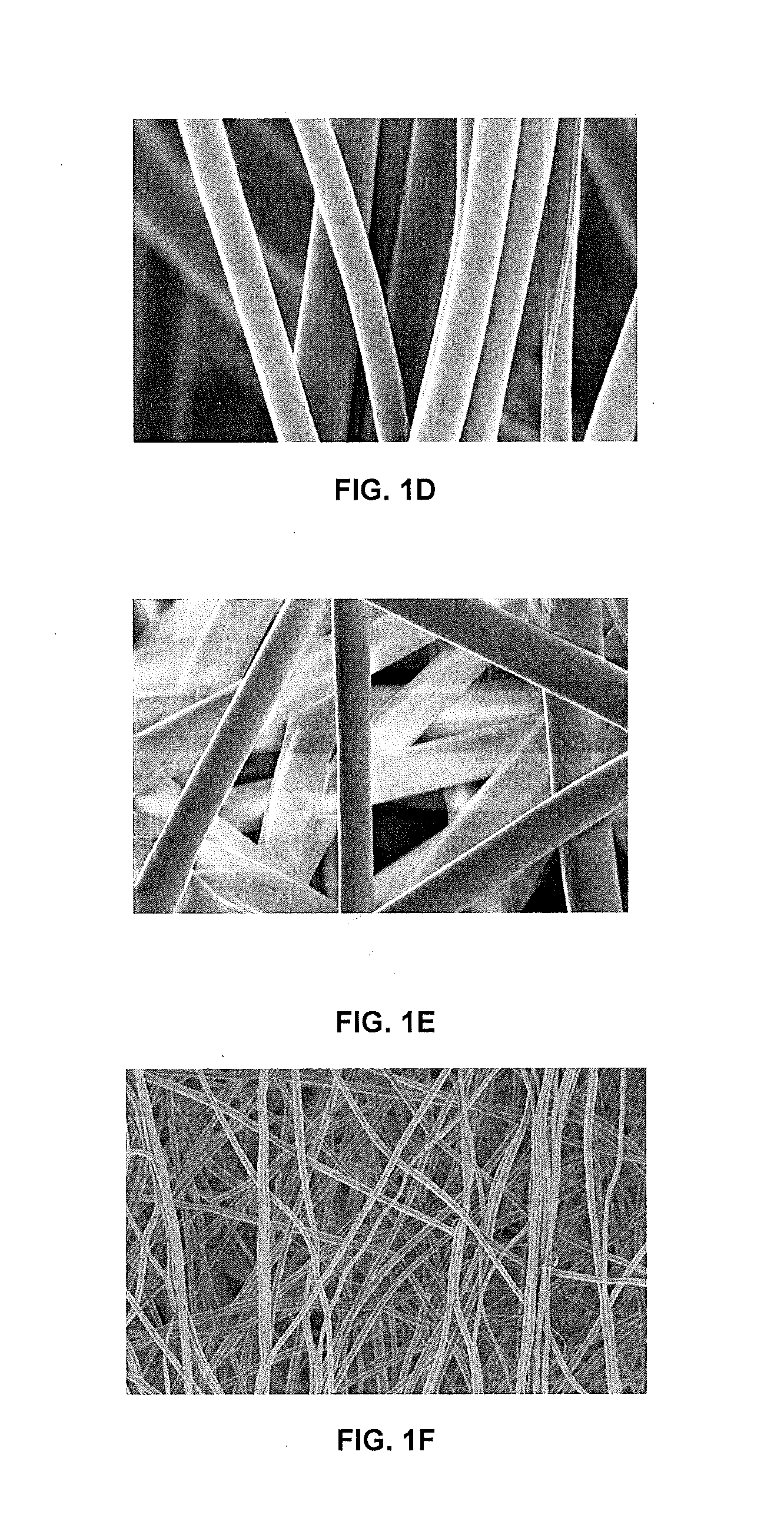3D biomimetic, bi-phasic key featured scaffold for osteochondral repair
a biomimetic and osteochondral technology, applied in the field of 3d biomimetic and biphasic key featured scaffolds for osteochondral repair, can solve the problems of not being able to achieve the robust integration of cartilage and subchondral bone, not being able to achieve the perfect solution for osteochondral regeneration, and not being able to achieve the effect of tissue reconstruction and/or production, excellent interfacial mechanical properties
- Summary
- Abstract
- Description
- Claims
- Application Information
AI Technical Summary
Benefits of technology
Problems solved by technology
Method used
Image
Examples
example 1
Electrospun Nano / Microscaffold for Cartilage Tissue Engineering
[0073]The purpose of these experiments was to investigate if the mechanical and cytocompatibility properties of electrospun polymer scaffolds for cartilage repair could be enhanced, with the addition of nanomaterials. It was also a goal to evaluate if the nanotubes modified with a cell-favorable molecule can effectively control specific differentiation of stem cells.
[0074]Advances in tissue engineering require more sophisticated materials both to characterize and grow tissues. For this purpose, carbon nanotubes / fibers are emerging candidates. Although the use of carbon nanotubes in tissue engineering is at its infancy, they have been considered exciting alternatives as templates for tissue growth, drug delivery agents and in bio-sensory applications. Carbon nanotubes mimic the dimensions of the constituent components of tissues, where cells are accustomed to interact with nano-fibrous proteins. This property makes them e...
example 2
3D Printed Scaffolds for Osteochondral Regeneration
[0112]Materials and Methods
[0113]3D Osteochondral Scaffold Design and Fabrication
[0114]All 3D osteochondral scaffolds were designed using Rhinoceros 3D modeling package. Scaffolds were then printed in groups of six using a PrinterBot 3D printing system, modified with a 347 μm diameter nozzle, and a spool (or filament fed into the printer) of 1.75 mm diameter biocompatible Polylactic acid (PLA) polymer. PLA comprises an aliphatic polyester of L-lactide units. 3D models were converted into a gcode instruction file using Slic3r, and then used to instruct the printer via the Pronterface software package. The PLA was extruded into a filament using a screw extrusion method. Raw polymer, usually in the form of small beads or pellets, is fed into a hopper attached to a heated, tubular chamber. The chamber has a motor driven screw throughout which turns and moves the pellets down the chamber, and melting them along the way. The chamber termi...
example 3
Additional 3D Printed Osteochondral Devices
[0145]Other embodiments were made with features similar to those in FIG. 9, including: 1) a homogenous cross-hatched structure, with features of 1 to 0.5 mm in size, 2) a bi-phasic structure consisting of a cross hatched pattern and an intersecting rings structure, and 3) biphasic structures but with reinforced key feature in the interface. In addition to above samples printed for cellular study and imaging, a large construct, mimicking the structure and anatomical shape of a human knee with internal bi-phasic and key features was also designed (similar to that shown in FIG. 17). A Stratasys Fortus 250 m 3D printing system was used to fabricate the full large model out of Acrylonitrile butadiene styrene (ABS), a common material used in rapid prototyping 3D printing, for demonstration purpose. Furthermore, the 3D printed cartilage layer of the model was synthesized of biocompatible PLA polymer. This model also had superficial pores on the su...
PUM
| Property | Measurement | Unit |
|---|---|---|
| Length | aaaaa | aaaaa |
| Length | aaaaa | aaaaa |
| Diameter | aaaaa | aaaaa |
Abstract
Description
Claims
Application Information
 Login to View More
Login to View More - R&D
- Intellectual Property
- Life Sciences
- Materials
- Tech Scout
- Unparalleled Data Quality
- Higher Quality Content
- 60% Fewer Hallucinations
Browse by: Latest US Patents, China's latest patents, Technical Efficacy Thesaurus, Application Domain, Technology Topic, Popular Technical Reports.
© 2025 PatSnap. All rights reserved.Legal|Privacy policy|Modern Slavery Act Transparency Statement|Sitemap|About US| Contact US: help@patsnap.com



